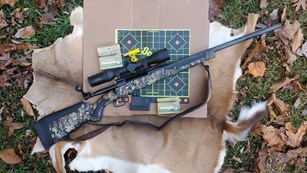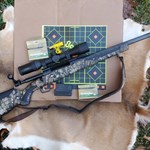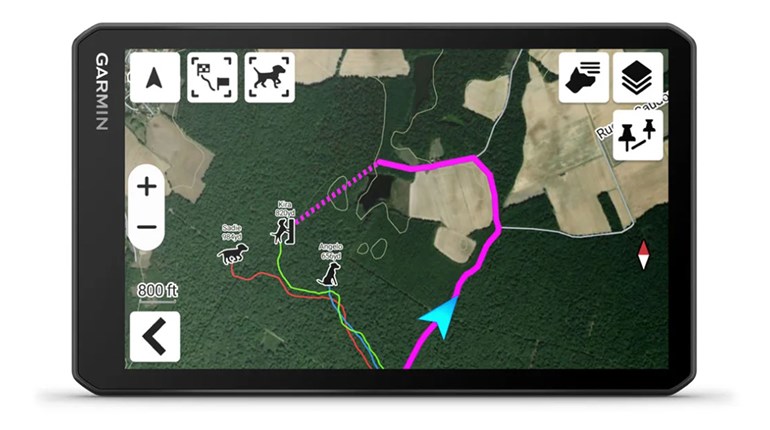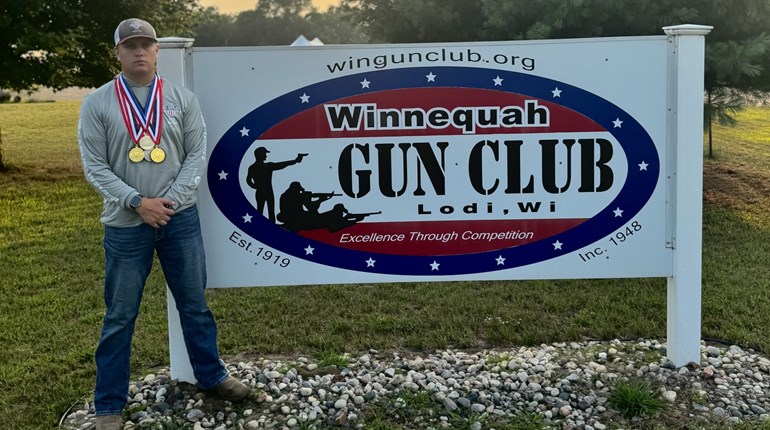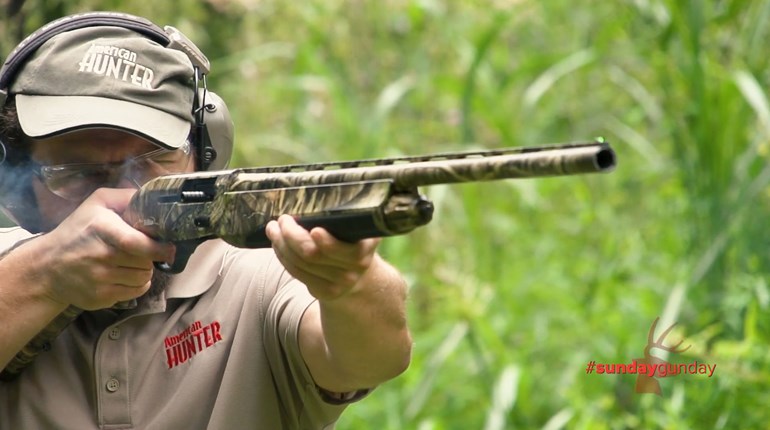** When you buy products through the links on our site, we may earn a commission that supports NRA's mission to protect, preserve and defend the Second Amendment. **
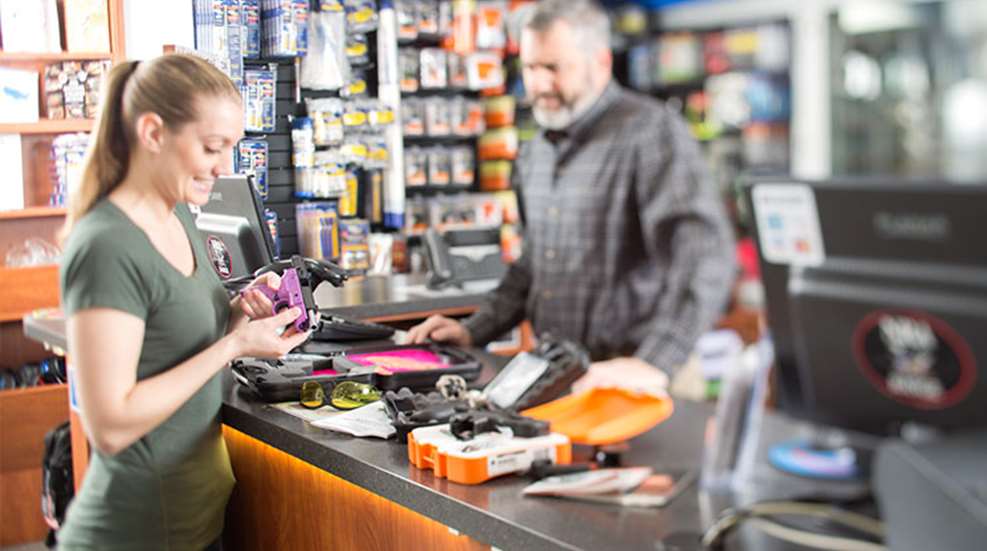
For several years, women have been the fastest-growing demographic of new gun owners, but many (and some men, too) don’t have a knowledgeable network of personal contacts that can help them acquire the information they need to choose their first gun. This is especially true when that first gun is a handgun for home defense or concealed carry. Fortunately, there’s a rational process they can follow to choose a handgun that fits their needs, familiarity level and budget.
Step 1: Determining Your Needs
Why do you want a handgun? The answer to this question will determine many of your new gun’s characteristics. If concealed carry is your goal, you’ll want a gun that is short, small and light, while one for home defense may be larger and heavier. Understand that no one gun can do everything well. While there are a few double-duty handguns suitable for both home defense or concealed carry, it’s best for new owners to determine their handgun’s single most critical function and let that guide the selection.
Step 2: Choosing Between a Semi-Automatic or a Revolver
Two types of handguns are widely relied upon for self-defense: semi-automatics and revolvers.
By far the most prevalent are semi-automatics, also called self-loaders, which use the gas pressure generated when a cartridge is fired to cycle the gun’s loading mechanism. First, the slide moves rearward, which in turn, ejects the empty case and cocks the firing mechanism. When a spring returns the slide forward, it feeds a fresh cartridge into the gun’s chamber from a detachable magazine, which may hold anywhere from six to 20 rounds. There are various types of semi-automatics, but all share the same advantages over the revolver: more rapid reload-ability, greater cartridge capacity and, for citizens with carry permits, a thinner, more concealable profile. Compared to a revolver, however, the semi-autos may be a bit more complex to operate. The beginner will need more practice to gain and maintain proficiency. Also, the semi-automatic is potentially less reliable than the revolver, and shooters with limited hand strength may find slide retraction and magazine loading difficult. Finally, while the semi-auto functions best with ammunition of a certain power level, the revolver digests everything from light target loads to heavy defensive loads.
Modern revolvers have a cylinder that swings out to the side. The cylinder has five or six chambers into which cartridges are loaded, and the cylinder rotates with each shot to bring a fresh cartridge in line with the barrel. Firing is accomplished in either single-action mode (the hammer is manually cocked and then released by a short, light trigger pull) or double-action mode (a single long and relatively heavy trigger pull both cocks and releases the hammer). Defensive firing with a revolver is always performed in the double-action mode.
Step 3: Selecting the Proper Caliber
Next is the selection of the caliber of your defensive handgun—that is, the exact cartridge it is designed to fire. This choice is critical, as it determines both the level of recoil you’ll have to manage and the effectiveness of the handgun/cartridge combination in a defensive situation. Caliber choice also influences gun size; a 9 mm Para pistol, for example, can be made smaller and lighter than one for the physically larger .45 ACP.
In general, as bullet diameter, weight and velocity go up, so do cartridge power, recoil and effectiveness in a defensive situation. Thus, 9 mm Para is not as powerful as the .40 S&W, which in turn is bested slightly by the .45 ACP. Also, each cartridge is offered in a variety of loads featuring different bullet weights and types at different velocities. The beginning handgunner will usually shoot faster and more accurately with one of the lower-recoil cartridges suitable for self-defense—such as the .380 Auto or 9 mm Para in semi-automatics or .38 Special in revolvers—than with more powerful choices such as the .357 Magnum or .45 ACP. Remember, shot placement is more important than sheer cartridge power.
Cartridge choice is not made in a vacuum: A person unable to handle a 9 mm Para in a small gun may still be comfortable with a .40 S&W or .45 ACP in a heavier, large-frame pistol. Thus, an informed choice involves firing guns of different sizes, barrel lengths and grip configurations in different calibers.
Step 4: Hands-On Shopping
Once you have established a preference for a particular gun type in a specific caliber, your best bet is to test-fire that model. Various makes and models of guns of the exact same type—say, medium-frame 9 mm semi-automatics—will differ widely in how they operate, feel, handle and shoot. It’s important to experience all that firsthand.
However not all gun stores have the means for such test-firing, and if a would-be buyer doesn’t have personal contacts who can help, hands-on research may be a difficult proposition. But because it is important, we’d recommend making an effort, and there are a few ways to do so.
Whenever possible, identify nearby gun stores with in-house ranges. Frequently such shops have test or rental units of the most popular models, and in fact many indoor ranges rent guns to customers. Quite likely, those rentals will include examples of models that interest first-time buyers of carry or home-defense handguns.
Another option would be to sign up for an NRA Basic Pistol or Personal Protection Course (https://explore.nra.org/interests/firearms-training/). The instructor may be able to help arrange for a student to test-fire different models of the type of pistol being sought. Whether a gun has already been purchased or not, these courses are very beneficial and highly recommended for every new gun owner.
Of course it’s also possible that the gun-owning friend of a friend or family member would agree to let a newcomer shoot his or her gun. Most handgun owners understand perfectly why gun ownership is so important, and many will be glad to help mentor a new shooter.
Step 5: Test-Firing Potential Candidates
The first thing to consider during your test-fire session is safety. Applying lessons learned from personal contacts or from a basic pistol course, is the gun easy to operate safely? Are safety or decocking levers positioned within finger reach, and are they easy to manipulate? Integral safety locks, available on some guns, may be worth considering as they may foil inquisitive children, but they can be a hindrance if the gun is needed to meet an immediate threat.
Reliability is the most important characteristic of a self-defense arm. Test any gun under consideration with at least 50 rounds of defensive ammunition. Semi-autos should be scrutinized for their ability to feed, fire and eject with a wide variety of loads. Also, the magazines should load securely, then drop freely when released.
Ergonomics and ease of use are also important in a defensive handgun, which may have to be handled and fired in a fast, natural manner. Does the gun fit the shooter’s hand comfortably and point naturally? Does his or her trigger finger engage the trigger properly, about halfway between the tip of the finger and the first joint? Are all the controls smooth to operate and can your fingers reach them easily? Is the gun easy to load and unload? Is the gun’s recoil controllable, enabling rapid shot-to-shot recovery?
Finally, if the gun is to be carried, does it conceal well in a pocket, purse, fanny pack or holster? When you practice drawing it—unloaded, of course—does it catch on your clothing? Does its weight cause your clothes to bulge or droop?
Step 5: The Final Decision
When the decision boils down to multiple viable alternatives, make the final choice by considering other factors: finishes, options, reputation of the manufacturer and the specific model. Price is another important factor; one can expect to pay from $350 to $750 or more for a new, high-quality handgun. But it’s false economy to let a concern for saving a few dollars heavily influence the choice of what will be a lifetime—and possibly life-saving—investment.
You should take advantage of all the information resources at your disposal, including gun store employees, NRA Certified Instructors, manufacturers’ catalogs and websites, videos, books and periodicals. As is the case with every subject, the Internet is awash in info on defensive handguns, but much of it ranges from highly opinionated to ill-informed to virtually worthless. So be careful of what’s there. Websites like NRA’s americanrifleman.org and shootingillustrated.com contain many handgun reviews and always strive to be fair and evenhanded.
Owning and learning to use a defensive handgun is a big responsibility, but it also can bring peace of mind, knowing that you now have the means to defend your life and your family.
Step 1: Determining Your Needs
Why do you want a handgun? The answer to this question will determine many of your new gun’s characteristics. If concealed carry is your goal, you’ll want a gun that is short, small and light, while one for home defense may be larger and heavier. Understand that no one gun can do everything well. While there are a few double-duty handguns suitable for both home defense or concealed carry, it’s best for new owners to determine their handgun’s single most critical function and let that guide the selection.
Step 2: Choosing Between a Semi-Automatic or a Revolver
Two types of handguns are widely relied upon for self-defense: semi-automatics and revolvers.
By far the most prevalent are semi-automatics, also called self-loaders, which use the gas pressure generated when a cartridge is fired to cycle the gun’s loading mechanism. First, the slide moves rearward, which in turn, ejects the empty case and cocks the firing mechanism. When a spring returns the slide forward, it feeds a fresh cartridge into the gun’s chamber from a detachable magazine, which may hold anywhere from six to 20 rounds. There are various types of semi-automatics, but all share the same advantages over the revolver: more rapid reload-ability, greater cartridge capacity and, for citizens with carry permits, a thinner, more concealable profile. Compared to a revolver, however, the semi-autos may be a bit more complex to operate. The beginner will need more practice to gain and maintain proficiency. Also, the semi-automatic is potentially less reliable than the revolver, and shooters with limited hand strength may find slide retraction and magazine loading difficult. Finally, while the semi-auto functions best with ammunition of a certain power level, the revolver digests everything from light target loads to heavy defensive loads.
Modern revolvers have a cylinder that swings out to the side. The cylinder has five or six chambers into which cartridges are loaded, and the cylinder rotates with each shot to bring a fresh cartridge in line with the barrel. Firing is accomplished in either single-action mode (the hammer is manually cocked and then released by a short, light trigger pull) or double-action mode (a single long and relatively heavy trigger pull both cocks and releases the hammer). Defensive firing with a revolver is always performed in the double-action mode.
Step 3: Selecting the Proper Caliber
Next is the selection of the caliber of your defensive handgun—that is, the exact cartridge it is designed to fire. This choice is critical, as it determines both the level of recoil you’ll have to manage and the effectiveness of the handgun/cartridge combination in a defensive situation. Caliber choice also influences gun size; a 9 mm Para pistol, for example, can be made smaller and lighter than one for the physically larger .45 ACP.
In general, as bullet diameter, weight and velocity go up, so do cartridge power, recoil and effectiveness in a defensive situation. Thus, 9 mm Para is not as powerful as the .40 S&W, which in turn is bested slightly by the .45 ACP. Also, each cartridge is offered in a variety of loads featuring different bullet weights and types at different velocities. The beginning handgunner will usually shoot faster and more accurately with one of the lower-recoil cartridges suitable for self-defense—such as the .380 Auto or 9 mm Para in semi-automatics or .38 Special in revolvers—than with more powerful choices such as the .357 Magnum or .45 ACP. Remember, shot placement is more important than sheer cartridge power.
Cartridge choice is not made in a vacuum: A person unable to handle a 9 mm Para in a small gun may still be comfortable with a .40 S&W or .45 ACP in a heavier, large-frame pistol. Thus, an informed choice involves firing guns of different sizes, barrel lengths and grip configurations in different calibers.
Step 4: Hands-On Shopping
Once you have established a preference for a particular gun type in a specific caliber, your best bet is to test-fire that model. Various makes and models of guns of the exact same type—say, medium-frame 9 mm semi-automatics—will differ widely in how they operate, feel, handle and shoot. It’s important to experience all that firsthand.
However not all gun stores have the means for such test-firing, and if a would-be buyer doesn’t have personal contacts who can help, hands-on research may be a difficult proposition. But because it is important, we’d recommend making an effort, and there are a few ways to do so.
Whenever possible, identify nearby gun stores with in-house ranges. Frequently such shops have test or rental units of the most popular models, and in fact many indoor ranges rent guns to customers. Quite likely, those rentals will include examples of models that interest first-time buyers of carry or home-defense handguns.
Another option would be to sign up for an NRA Basic Pistol or Personal Protection Course (https://explore.nra.org/interests/firearms-training/). The instructor may be able to help arrange for a student to test-fire different models of the type of pistol being sought. Whether a gun has already been purchased or not, these courses are very beneficial and highly recommended for every new gun owner.
Of course it’s also possible that the gun-owning friend of a friend or family member would agree to let a newcomer shoot his or her gun. Most handgun owners understand perfectly why gun ownership is so important, and many will be glad to help mentor a new shooter.
Step 5: Test-Firing Potential Candidates
The first thing to consider during your test-fire session is safety. Applying lessons learned from personal contacts or from a basic pistol course, is the gun easy to operate safely? Are safety or decocking levers positioned within finger reach, and are they easy to manipulate? Integral safety locks, available on some guns, may be worth considering as they may foil inquisitive children, but they can be a hindrance if the gun is needed to meet an immediate threat.
Reliability is the most important characteristic of a self-defense arm. Test any gun under consideration with at least 50 rounds of defensive ammunition. Semi-autos should be scrutinized for their ability to feed, fire and eject with a wide variety of loads. Also, the magazines should load securely, then drop freely when released.
Ergonomics and ease of use are also important in a defensive handgun, which may have to be handled and fired in a fast, natural manner. Does the gun fit the shooter’s hand comfortably and point naturally? Does his or her trigger finger engage the trigger properly, about halfway between the tip of the finger and the first joint? Are all the controls smooth to operate and can your fingers reach them easily? Is the gun easy to load and unload? Is the gun’s recoil controllable, enabling rapid shot-to-shot recovery?
Finally, if the gun is to be carried, does it conceal well in a pocket, purse, fanny pack or holster? When you practice drawing it—unloaded, of course—does it catch on your clothing? Does its weight cause your clothes to bulge or droop?
Step 5: The Final Decision
When the decision boils down to multiple viable alternatives, make the final choice by considering other factors: finishes, options, reputation of the manufacturer and the specific model. Price is another important factor; one can expect to pay from $350 to $750 or more for a new, high-quality handgun. But it’s false economy to let a concern for saving a few dollars heavily influence the choice of what will be a lifetime—and possibly life-saving—investment.
You should take advantage of all the information resources at your disposal, including gun store employees, NRA Certified Instructors, manufacturers’ catalogs and websites, videos, books and periodicals. As is the case with every subject, the Internet is awash in info on defensive handguns, but much of it ranges from highly opinionated to ill-informed to virtually worthless. So be careful of what’s there. Websites like NRA’s americanrifleman.org and shootingillustrated.com contain many handgun reviews and always strive to be fair and evenhanded.
Owning and learning to use a defensive handgun is a big responsibility, but it also can bring peace of mind, knowing that you now have the means to defend your life and your family.









